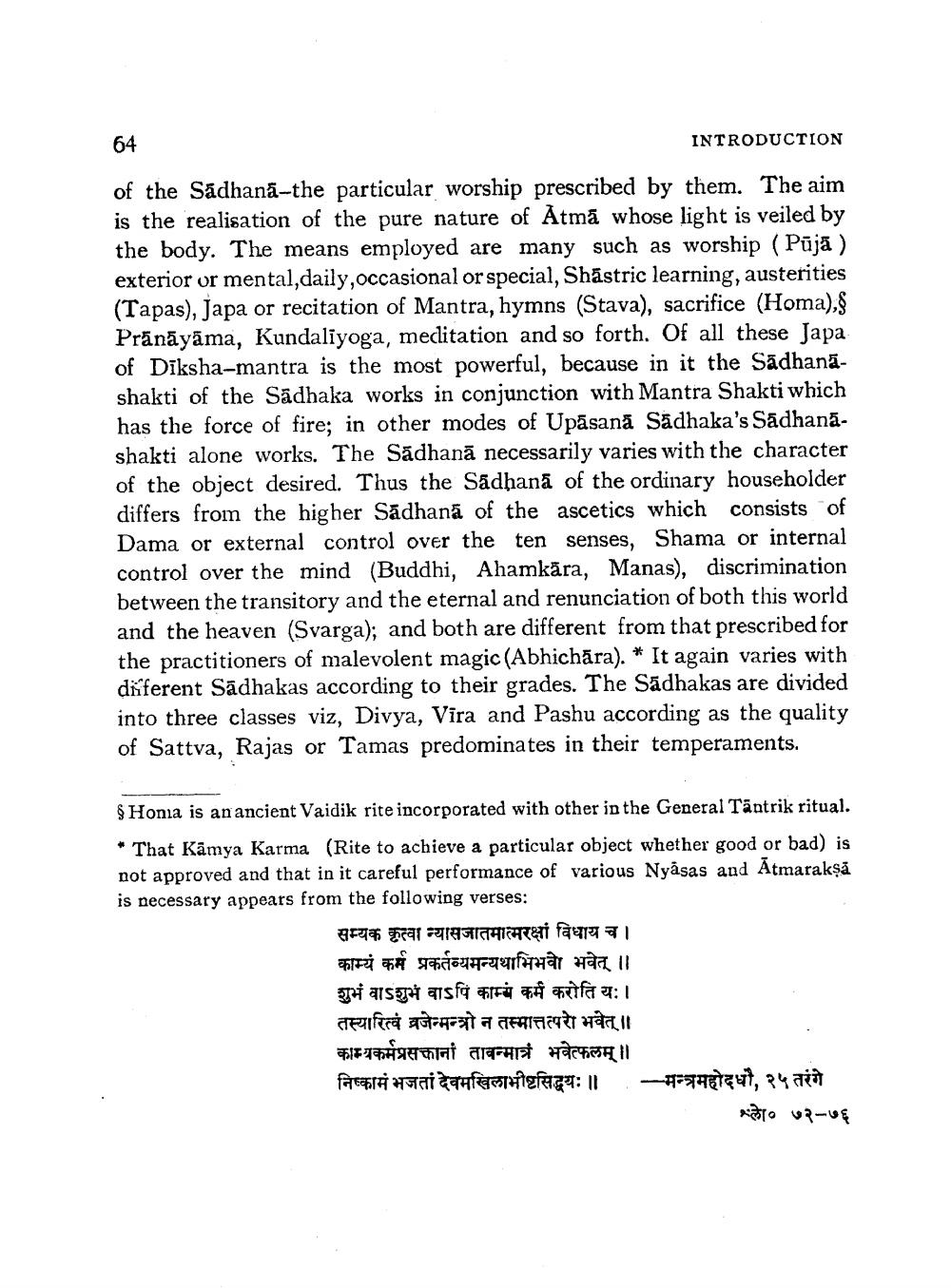________________
64
of the Sadhana-the particular worship prescribed by them. The aim is the realisation of the pure nature of Atma whose light is veiled by the body. The means employed are many such as worship (Pūjā) exterior or mental,daily, occasional or special, Shastric learning, austerities (Tapas), Japa or recitation of Mantra, hymns (Stava), sacrifice (Homa),§ Prānāyāma, Kundaliyoga, meditation and so forth. Of all these Japa of Diksha-mantra is the most powerful, because in it the Sādhanāshakti of the Sadhaka works in conjunction with Mantra Shakti which has the force of fire; in other modes of Upasana Sadhaka's Sadhanashakti alone works. The Sadhana necessarily varies with the character of the object desired. Thus the Sadhana of the ordinary householder differs from the higher Sadhana of the ascetics which consists of Dama or external control over the ten senses, Shama or internal control over the mind (Buddhi, Ahamkāra, Manas), discrimination between the transitory and the eternal and renunciation of both this world and the heaven (Svarga); and both are different from that prescribed for the practitioners of malevolent magic (Abhichāra). * It again varies with different Sadhakas according to their grades. The Sadhakas are divided into three classes viz, Divya, Vīra and Pashu according as the quality of Sattva, Rajas or Tamas predominates in their temperaments.
INTRODUCTION
§ Homa is an ancient Vaidik rite incorporated with other in the General Tantrik ritual. * That Kamya Karma (Rite to achieve a particular object whether good or bad) is not approved and that in it careful performance of various Nyasas and Atmarakṣā is necessary appears from the following verses:
सम्यक कृत्वा न्यासजातमात्मरक्षां विधाय च । काम्यं कर्म प्रकर्तव्यमन्यथाभिभवो भवेत् ॥ शुभं वाऽशुभं वाऽपि काम्यं कर्म करोति यः । तस्यारित्वं व्रजेन्मन्त्रो न तस्मात्तत्परो भवेत् ॥ atraकर्मप्रसानां तावन्मात्रं भवेत्फलम् ॥ निष्कामं भजतां देवमखिलाभीष्टसिद्धयः ॥
- मन्त्रमहोदधौ, २५ तरंगे श्लो० ७२-७६




